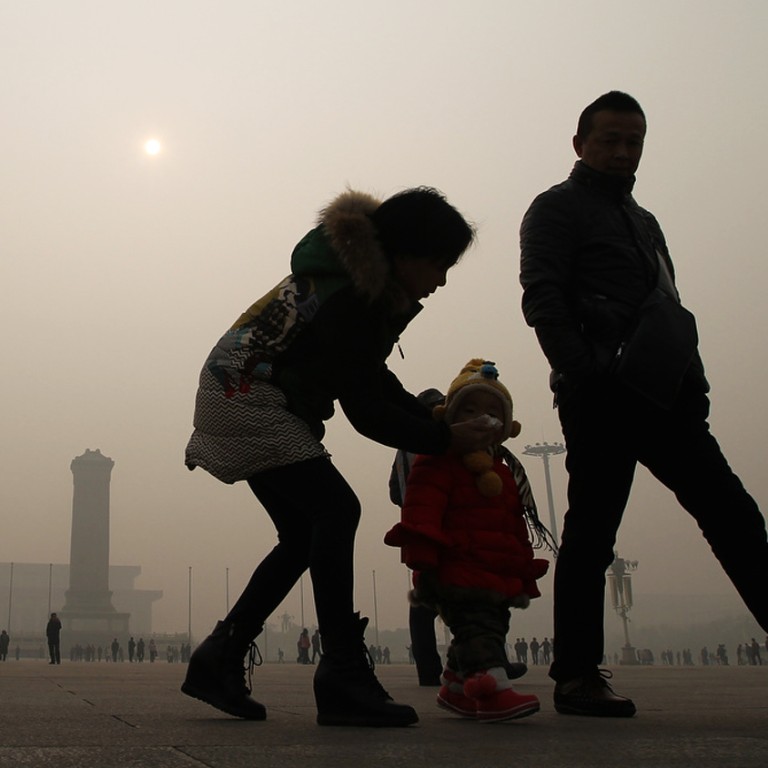
Beijing issues highest smog alert of the year as capital chokes on ‘very unhealthy’ air
Beijing issued its highest air pollution alert of the year on Sunday as smog persisted in northern China for a second day.
Local authorities issued the orange alert – the second highest in the four-tier system – meaning industrial plants were required to cut or shut down production, construction sites should stop transporting materials and waste, and heavy-duty trucks were banned from the roads.
The PM2.5 reading hit the “very unhealthy” level of 274 micrograms per cubic metre in most parts of the capital yesterday, the municipal weather centre said. The reading at the US embassy in Beijing reached 250mcg at 10am.
The World Health Organisation recommends exposure to PM2.5 particulates should not exceed 25mcg a day.
The municipal weather centre said humidity and a lack of wind meant the smog would linger for another two days before a cold front arrived on Wednesday.

READ MORE: Hazardous smog levels engulf Beijing and northern China: children and elderly warned to stay indoors
Earlier this month, air quality reached extremely hazardous levels in Shenyang, Liaoning province, after winter central heating was turned on. Local authorities said the peak density of PM2.5 on November 8 was more than 1,200mcg per cubic metre.
Mainland citizens have grown increasingly concerned about air quality after the nation embarked on a path of robust economic growth that led to heavy emissions of pollutants.
But China achieved the pollution reduction targets for major pollutants outlined in its 2010 to 2015 five-year plan, Xinhua quoted Environment Minister Chen Jining as saying.
According to Chen, by last year, discharge of sulphur dioxide and chemical oxygen demand, a measure of organic pollutants in water, had dropped 12.9 and 10.1 per cent respectively from 2010 levels.
READ MORE: Smog in northeast China at nearly 50 times World Health Organisation safe limits
Emissions of ammonia nitrogen and nitrogen oxide had also declined 9.8 and 8.6 per cent respectively.
In the 2010 to 2015 five-year plan, China vowed to cut sulphur dioxide and chemical oxygen demand emissions by 8 per cent, and ammonia nitrogen and nitrogen oxide emissions by 10 per cent from 2010 levels.
The mainland also phased out some 250,000 tonnes of ozone-depleting substances in the same period – more than half the total amount phased out by all developing countries – Chen said.
But the minister warned that some 20 million tonnes of major pollutants were still being discharged on the mainland every year. That the figure had to come down another 30 to 50 per cent, he said.
Over the next five years, China would remain committed to further reducing emissions of various pollutants, Chen added.

